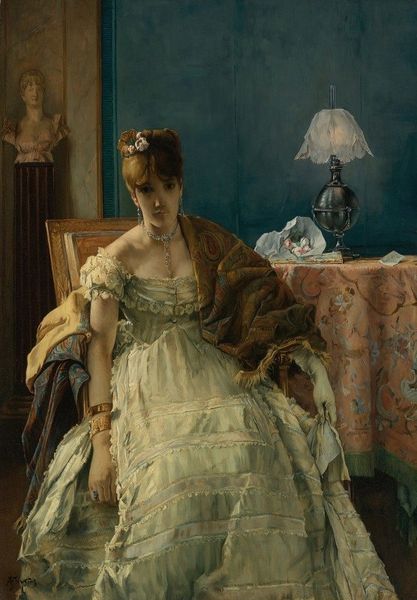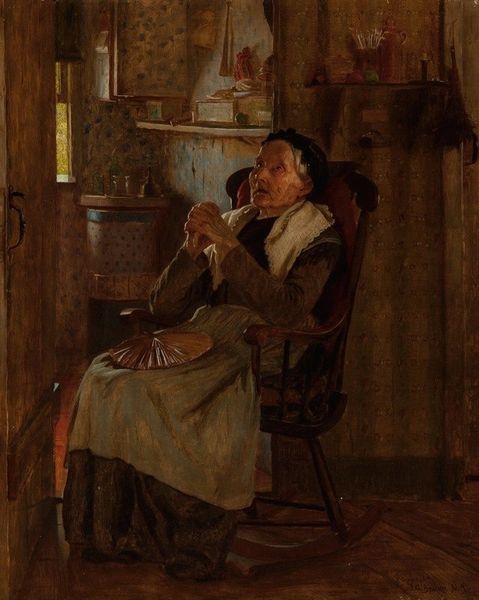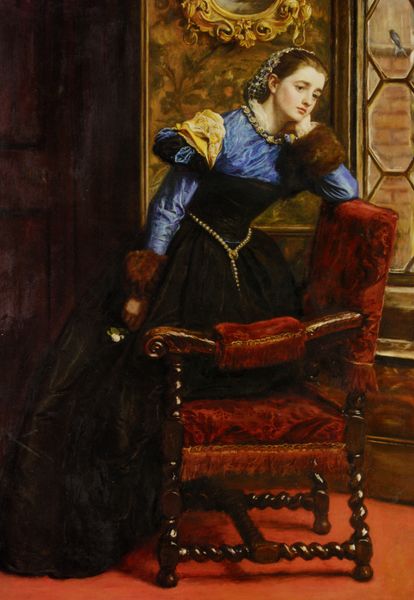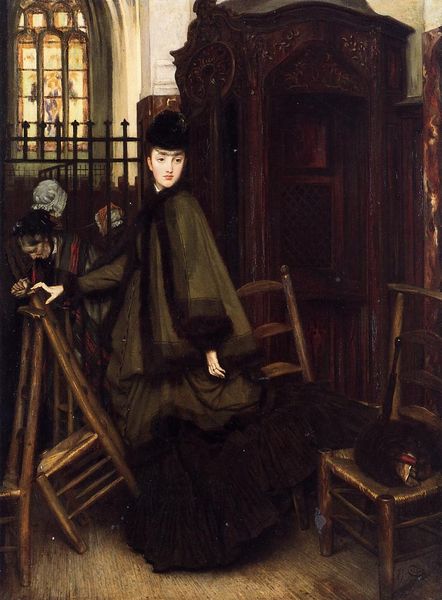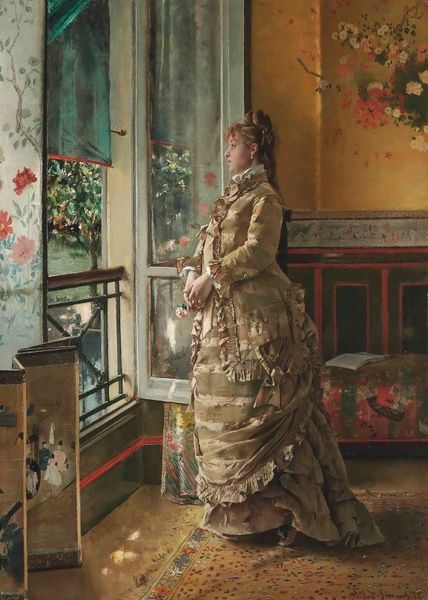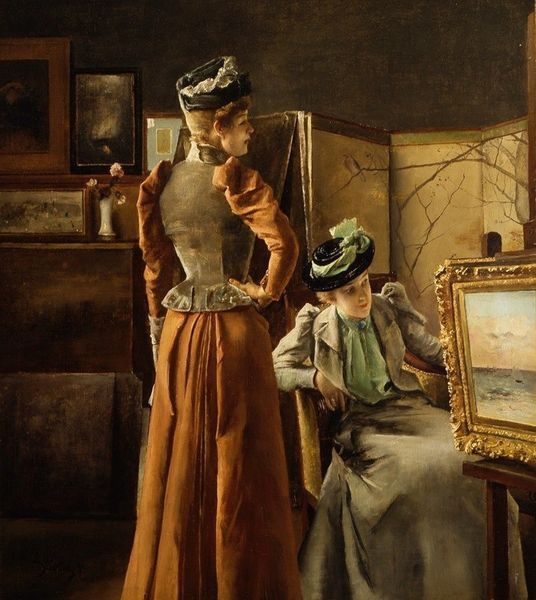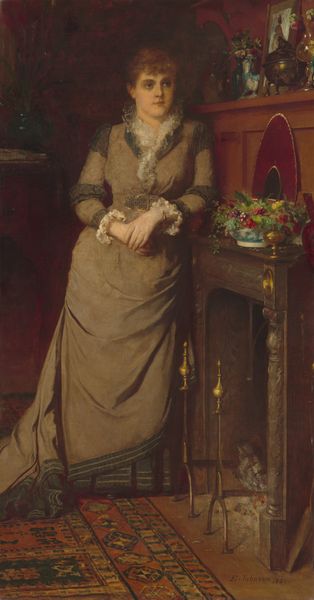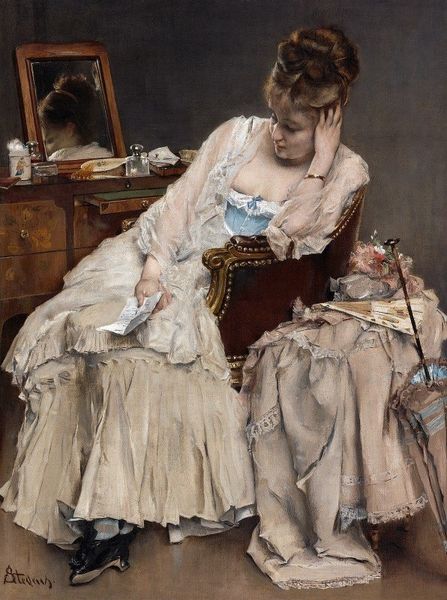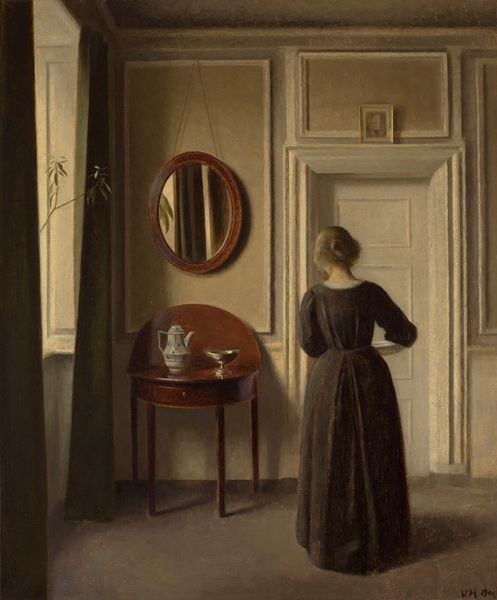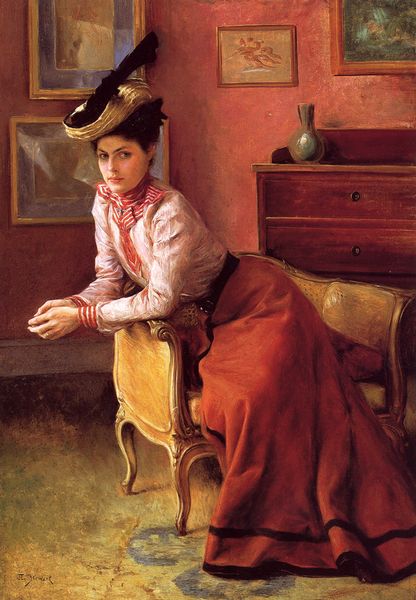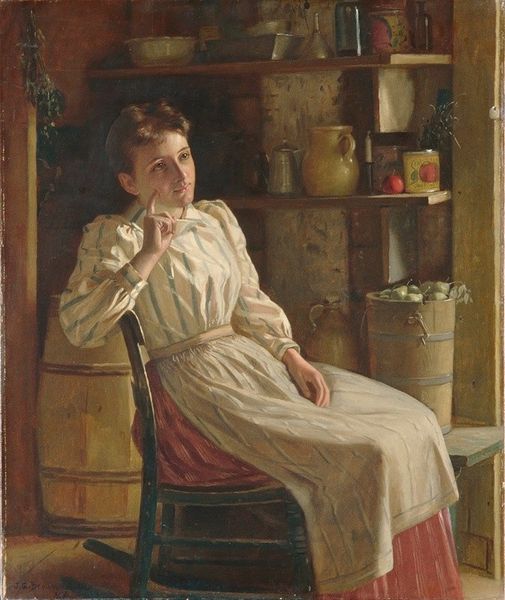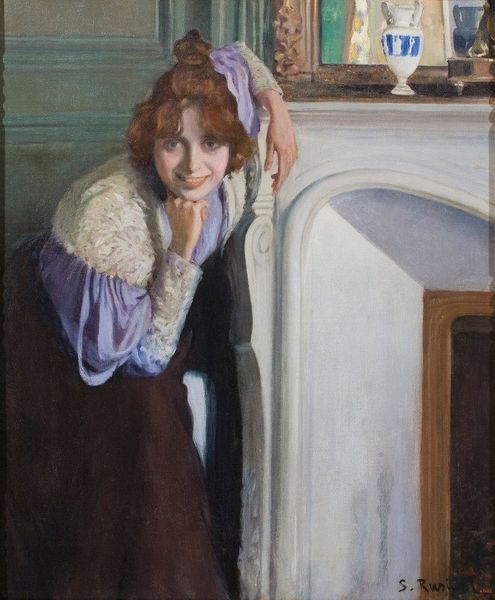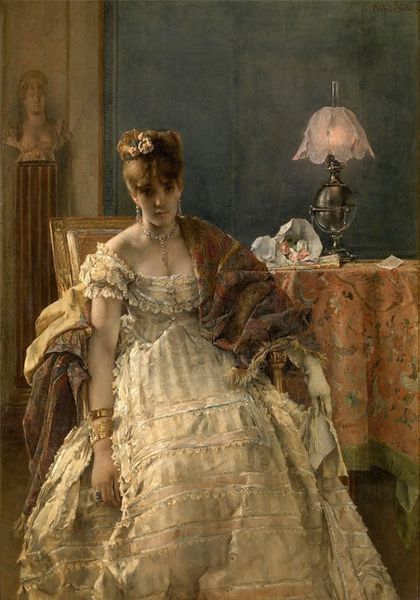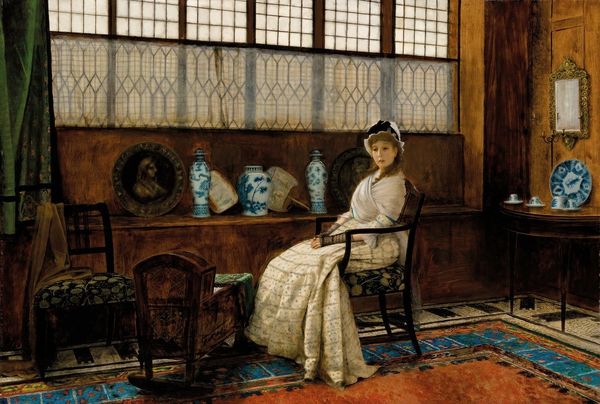
Dimensions: 39 1/2 × 33 1/2 in. (100.33 × 85.09 cm) (outer frame)30 1/2 × 24 15/16 in. (77.47 × 63.34 cm) (sight)
Copyright: No Copyright - United States
Editor: Alexis Jean Fournier’s painting, "The Visitor," dating from around 1895 to 1898, is quite captivating! I’m struck by the intimate domestic scene, and the woman's somewhat melancholic gaze. How do you interpret this work, especially given its period? Curator: It is an intriguing painting. Look at the objects – the tea service, the fur rug, even the red of the visitor’s hat – these speak of a certain social status, a comfortable existence perhaps. Yet, her expression, as you pointed out, hints at something more complex. Don't you agree there's a theatricality to her presence? Editor: I do. It's almost as if she's performing a role, or being observed herself. Curator: Precisely. The symbols of domesticity are almost staged. Ask yourself, what is the significance of the easel draped in cloth partially obscuring the viewer’s perspective? Fournier seems to be posing questions about perception itself. It is a recurring motif to symbolize “an artist’s world” filtered through their canvas to emphasize creative vision within a cultural world. Editor: So the painting isn't just showing a visit, but also saying something about how we observe and interpret everyday life? Curator: Exactly. This ‘visitor’ perhaps represents our own interaction with societal structures and performances within our own reality. Fournier urges you to ponder the many layers and the subjective impressions that comprise not only the sitter's experience, but the very nature of reality as we each observe it. How does our viewpoint inevitably skew objectivity? Editor: That really shifts my understanding. I initially saw it as just a snapshot of a moment, but it seems much more profound than that. Curator: These symbols remind us that artistic expression is about revealing truths through shared visual understanding, reflecting our intertwined social experiences, and inviting active contemplation about one's position relative to the universe. Editor: This deeper dive made me appreciate not only Fournier's skill but how paintings can pose questions and initiate discussions, linking human experience with symbol use throughout generations. Curator: Indeed! The resonance lies in understanding the shared iconography across societal structures.
Comments
minneapolisinstituteofart almost 2 years ago
⋮
Portraits by Fournier are quite rare, since he preferred to paint landscapes. The setting for this one is his Minneapolis art studio. It was likely painted between his frequent trips to France in the years 1895 to 1898.
Join the conversation
Join millions of artists and users on Artera today and experience the ultimate creative platform.
